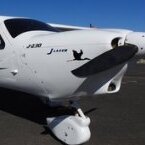-
Posts
3,464 -
Joined
-
Last visited
-
Days Won
47

RFguy replied to RFguy's topic in Engines and Props

RFguy replied to RFguy's topic in Engines and Props

RFguy replied to RFguy's topic in Engines and Props

RFguy replied to RFguy's topic in Engines and Props

RFguy replied to RFguy's topic in Engines and Props

RFguy replied to RFguy's topic in Engines and Props

RFguy replied to RFguy's topic in Engines and Props

RFguy replied to RFguy's topic in Engines and Props

RFguy replied to RFguy's topic in Engines and Props

RFguy replied to RFguy's topic in Engines and Props

RFguy replied to RFguy's topic in Engines and Props

RFguy replied to RFguy's topic in Engines and Props

RFguy replied to RFguy's topic in Engines and Props

RFguy replied to RFguy's topic in Engines and Props

RFguy replied to RFguy's topic in Engines and Props

